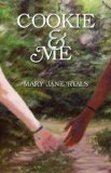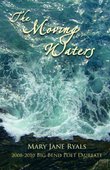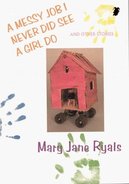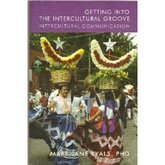Books
Cookie & Me

Published by Kitsune Press in September 2010. Winner of the 2010 bronze metal from the Florida Book Awards.
Set in the South during the 1960s, Cookie & Me will inevitably be compared with To Kill a Mockingbird, but it has a tougher narrator in thirteen-year-old Rayann Wood. Rayann has to be tough: her father (who is no Atticus Finch) does not quite have his family's best interests at heart, and her mother desperately needs Rayann's help. Rising to the challenge, Rayann is a character you care deeply about.
Mary Jane Ryals has had the courage to make her narrator a real product of her time and place: Rayann does not magically have twenty-first-century ideas about race and equality. What she does have is heart, which leads her to reach, however imperfectly at times, across racial boundaries to make friends. Cookie & Me is a wonderful, satisfying novel.--CLIFFORD THOMPSON
Set in the South during the 1960s, Cookie & Me will inevitably be compared with To Kill a Mockingbird, but it has a tougher narrator in thirteen-year-old Rayann Wood. Rayann has to be tough: her father (who is no Atticus Finch) does not quite have his family's best interests at heart, and her mother desperately needs Rayann's help. Rising to the challenge, Rayann is a character you care deeply about.
Mary Jane Ryals has had the courage to make her narrator a real product of her time and place: Rayann does not magically have twenty-first-century ideas about race and equality. What she does have is heart, which leads her to reach, however imperfectly at times, across racial boundaries to make friends. Cookie & Me is a wonderful, satisfying novel.--CLIFFORD THOMPSON
The Moving Waters

Published by Kitsune Press in 2008.
The Moving Waters, first bound poetry collection in nine parts, ranges from poems celebrating travels across Western Europe, Mexico and Vietnam to poems of life and family set in the natural world of Florida.I love this collection of poems by Mary Jane Ryals! There is something so raw and real in her prose that feels familiar yet exotic. Ryals "gets" the essence of being a woman who is also a traveller, a dreamer, a wife, a mother, a daughter, etc. and all the wonderful messiness that comes with the constant metamorphosis involved. She will make you want to pack your bags for adventure, hug your loved ones and romp with your spouse. --S.BURTON, TALLY
The Moving Waters, first bound poetry collection in nine parts, ranges from poems celebrating travels across Western Europe, Mexico and Vietnam to poems of life and family set in the natural world of Florida.I love this collection of poems by Mary Jane Ryals! There is something so raw and real in her prose that feels familiar yet exotic. Ryals "gets" the essence of being a woman who is also a traveller, a dreamer, a wife, a mother, a daughter, etc. and all the wonderful messiness that comes with the constant metamorphosis involved. She will make you want to pack your bags for adventure, hug your loved ones and romp with your spouse. --S.BURTON, TALLY
A Messy Job I Never Did See A Girl Do

Messy Job I Never Did See A Girl Do, by Mary Jane Ryals, is a kaleidoscope of tumbling words that ultimately fit together into a highly perceptive, rough-edged picture of southern U.S. culture. The result is stories that make you laugh out loud, cuss and spit, and cry revival empathies for the banged-on unheard. Mary Jane captures the native intelligence of young people who, in their own awkward ways, expose the weaknesses, the bigotry and emotional insensitivity of the adults in their lives. At the same time, we feel all of the characters' fears behind the numbness or the anger, the anxiety and the outrage, or the wiry strength and simple stubbornness. Her characters make us believe that the scars on the new generation will not run so deep and not be as debilitating as on the old. We are left with the hope that the new generation will be better in some ways, kinder or more accepting, willing to look over walls, kick them, and knock them down. --M.LEHMAN, ORLANDO, FL

